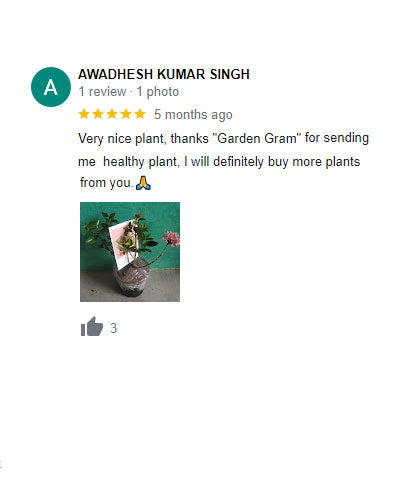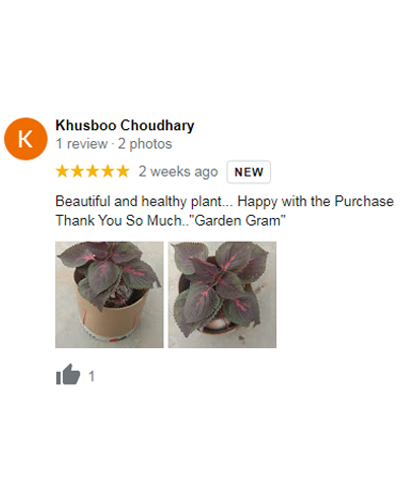Plants to Attract Birds and Butterflies
Hey there, welcome to Gardengram! Today, we're diving into the wonderful world of attracting birds and butterflies to your garden. Now, you might be wondering, why should I bother? Well, just think about your garden filled with colorful butterflies flitting around and cheerful birds singing their hearts out. It's not just about making your garden look pretty; it's about creating a little haven for these lovely creatures right in your backyard.
Why Attracting Birds and Butterflies Matters

Alright, let's break it down. You see, birds and butterflies aren't just there to add some extra pizzazz to your garden—they play some pretty important roles too. Think of them as your garden's little helpers. Birds help out by munching on pesky insects that might otherwise chomp away at your plants. And butterflies? Well, they're like nature's own little flower delivery service, helping to pollinate your garden as they flit from bloom to bloom. So, by inviting them into your garden, you're not just adding some extra beauty—you're actually helping your garden thrive.
The Joy of Nature's Beauty: Creating a Bird and Butterfly Haven in Your Garden
Now, let's talk about the fun part. There's something truly magical about being surrounded by nature's beauty, isn't there? And by attracting birds and butterflies to your garden, you're basically creating your own little piece of paradise. Whether you're a seasoned gardener or just starting out, attracting birds and butterflies to your garden is a wonderful way to bring a little extra joy and beauty into your life. So, let's roll up our sleeves and get started, shall we?
Choosing the Right Plants

Selecting the perfect plants for your garden can feel like picking out the best ingredients for a recipe. Just like you wouldn't use tomatoes in a cake, you want to choose plants that cater to the tastes of your winged visitors. Let's break it down into simple steps:
Native vs. Non-Native: Understanding the Importance
When it comes to selecting plants for your garden, it's essential to consider whether they are native to India or not. Native plants are those that naturally occur in a particular region and have evolved alongside local wildlife over thousands of years. These plants are well-adapted to the local climate, soil, and wildlife, making them an ideal choice for attracting birds and butterflies.
On the other hand, non-native plants are those that have been introduced to India from other regions or countries. While these plants may offer aesthetic appeal, they may not provide the same benefits to local wildlife as native plants. Non-native plants may not offer the right kind of food, shelter, or habitat for birds and butterflies, potentially disrupting the local ecosystem.
Selecting Plants for Your Region: Climate and Soil Considerations

India's vast and varied landscape encompasses a wide range of climates and soil types, from the humid tropics of the south to the arid deserts of the west. When choosing plants for your garden, it's crucial to consider the specific climate and soil conditions of your region.
For example, if you live in the tropical regions of southern India, you'll want to choose plants that can thrive in hot and humid conditions, such as hibiscus, jasmine, and bougainvillea. On the other hand, if you live in the cooler northern regions of India, you'll want to select plants that are more cold-tolerant, such as marigolds, roses, and dahlias.
Similarly, consider the type of soil in your garden, whether it's sandy, clayey, or loamy. Certain plants prefer specific soil types, so it's essential to choose plants that are well-suited to your garden's soil conditions.
Bird-Friendly Plants
Now, let's talk about some plants that our feathered friends absolutely love! These plants are like a magnet for birds, attracting them with their delicious treats and cozy hideaways. Here are a few bird-friendly plants native to India that you can easily incorporate into your garden:
Nectar-Rich Flowers: Inviting Hummingbirds and Orioles
Hibiscus: Known for its vibrant and showy flowers, hibiscus plants are a favorite among hummingbirds. These tiny birds can't resist the sweet nectar hidden within the hibiscus blooms.
Indian Coral Tree (Erythrina variegata): With its striking red flowers, the Indian Coral Tree is a favorite hangout spot for hummingbirds. They love sipping on the nectar from its flowers, making it a must-have in any bird-friendly garden.
Flame-of-the-forest (Butea monosperma): This beautiful tree produces clusters of bright orange-red flowers that hummingbirds find irresistible. Planting a flame-of-the-forest tree in your garden will surely attract these delightful little birds.
Berry-Producing Shrubs
Indian Gooseberry (Amla): Not only is the Indian gooseberry a popular fruit for humans, but it's also a favorite snack for many songbirds. Its small, tart berries are a rich source of vitamins and minerals, making them a nutritious treat for our feathered friends.
Indian Hawthorn (Rhaphiolepis indica): The Indian hawthorn is a compact shrub that produces clusters of small berries loved by birds. These berries provide a valuable food source for songbirds throughout the year, making it a great addition to any bird-friendly garden.
Indian Cherry (Muntingia calabura): Also known as the Strawberry Tree, the Indian cherry produces small, red berries that are a favorite among many songbirds. Planting an Indian cherry tree in your garden will provide a continuous supply of tasty treats for our feathered friends.
Seed-Bearing Plants: Attracting Finches and Sparrows
Sunflower (Helianthus annuus): Sunflowers are not only a cheerful addition to any garden but also a favorite among finches and sparrows. They love munching on the seeds produced by sunflower heads, making it a popular snack spot for these birds.
Indian Mustard (Brassica juncea): Indian mustard is not only a staple in Indian cuisine but also a favorite among seed-eating birds like finches and sparrows. Its small, black seeds are a rich source of nutrients, making them a valuable food source for our feathered friends.
Sorghum (Sorghum bicolor): Sorghum is a cereal grain that produces seeds loved by many seed-eating birds. Planting sorghum in your garden will provide a tasty and nutritious snack for finches and sparrows, attracting them to your outdoor space.
Butterfly-Friendly Plants
Butterflies are like flying flowers, and to invite them into your garden, you need the right kind of plants that cater to their needs. Let's explore some easy-to-find and easy-to-care-for butterfly-friendly plants that are native to India.
Host Plants: Catering to Butterfly Lifecycle Needs
Think of host plants as a butterfly's nursery. These are the plants where butterflies lay their eggs, and their caterpillars munch away happily. In India, one of the most popular host plants is the Indian milkweed (Asclepias curassavica), also known as the blood flower. It's a favorite of the monarch butterfly and its caterpillars. Another great option is the curry leaf tree (Murraya koenigii), which attracts the common mormon butterfly.
Nectar Sources: Flowers That Delight Butterflies
When it comes to nectar sources, butterflies have a sweet tooth for brightly colored flowers. Marigolds (Tagetes), commonly found in Indian gardens, are a hit with butterflies like the common tiger and plain tiger. Another favorite is the Indian blanket flower (Gaillardia pulchella), with its vibrant hues and nectar-rich blooms, which attract a variety of butterfly species.
Sun-Loving vs. Shade-Tolerant: Considering Butterfly Habitat Preferences
Butterflies love basking in the sun, so plants that thrive in full sunlight are a big draw for them. Consider planting sun-loving flowers like the butterfly pea (Clitoria ternatea), whose blue flowers are not only stunning but also attract butterflies like the lime butterfly. If your garden has shaded areas, don't worry! You can still attract butterflies with shade-tolerant plants like the pentas (Pentas lanceolata), which bloom in various shades and are a magnet for butterflies seeking nectar.
Frequently Asked Questions/ FAQs
1. Which plants attract birds?
Plants that produce nectar-rich flowers, berry-producing shrubs, and seed-bearing plants are excellent choices for attracting birds to your garden. Some specific examples include trumpet vine, bee balm, salvia, elderberry, serviceberry, sunflowers, coneflowers, and black-eyed Susans.
2. What plants are good for birds, bees, and butterflies?
Plants that cater to the needs of birds, bees, and butterflies typically include a diverse selection of native flowering plants. Some options include butterfly bush, lantana, zinnias, milkweed, parsley, dill, and a variety of wildflowers. These plants provide nectar for butterflies, pollen for bees, and food sources for birds.
3. How can we attract birds to your garden?
To attract birds to your garden, consider incorporating a variety of bird-friendly plants, providing sources of water such as birdbaths or puddling areas, and offering shelter in the form of trees, shrubs, and birdhouses. Additionally, keeping your garden pesticide-free and providing food sources such as bird feeders can also help attract birds.
4. Which tree is best for birds?
Several tree species are known to attract birds due to their foliage, flowers, or fruit. Some popular choices include oak trees, which provide acorns for various bird species, fruit trees like cherry or apple trees, which offer food for birds, and evergreen trees such as pine or spruce, which provide shelter and nesting sites. Ultimately, the best tree for birds will depend on factors like your region and the specific bird species you're looking to attract.
So whether you're a seasoned gardener or just starting out, consider incorporating bird and butterfly-friendly plants into your outdoor space. Not only will you be creating a beautiful and vibrant garden, but you'll also be making a positive impact on the environment and enjoying the beauty of nature right in your own backyard.















